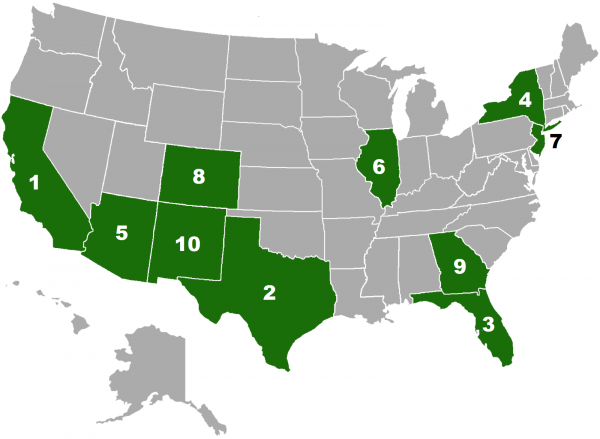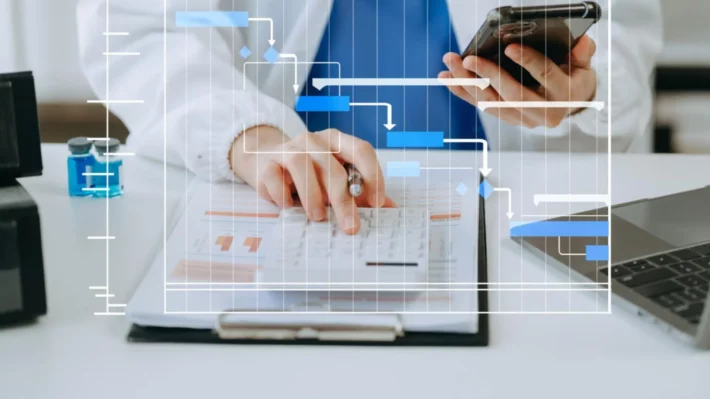Language Barriers in Healthcare: How to Overcome Them to Improve Patient Access

Explore practical strategies to overcome language barriers in healthcare, ensuring improved patient access and better health outcomes.
Language barriers in healthcare are a significant challenge, particularly in the United States, where nearly one in five residents is Latino. With the Hispanic population accounting for approximately 18.9 percent of the total US population—a figure that continues to grow—it is essential to address the communication gaps that can arise when patients and healthcare providers do not speak the same language.

Credit: Hispanic/Latino – Office of Minority Health – HHS.gov
Studies have shown that language barriers can lead to misunderstandings, misdiagnoses, and even adverse health outcomes, highlighting the importance of bilingual support in healthcare centers.
Regardless of their language, all patients should be able to fully understand their medical conditions, treatment options, and health plans. However, providers continue to face challenges in guaranteeing this.
Are there strategies that Providers can implement to overcome language barriers in healthcare and improve patient access and outcomes for Spanish-speaking communities? Let’s explore the current landscape.
How do language barriers affect healthcare?
Language barriers considerably affect patient outcomes, often resulting in a lower quality of care and a heightened risk of medical errors. When patients cannot effectively communicate their symptoms, medical histories, or concerns, healthcare providers may misdiagnose conditions or miss critical information. This miscommunication can lead to:
-
Delayed diagnosis
Patients may struggle to describe their symptoms accurately, leading to delays in diagnosis and treatment. For example, a patient with limited English proficiency might find it challenging to explain chest pain, resulting in a delayed response to a potential heart attack.
-
Inappropriate treatment plans
Without a clear understanding of a patient’s needs and medical history, healthcare providers might prescribe treatments that are not fully effective or safe. This is particularly critical in cases where a patient’s cultural background influences their response to certain medications or treatments.
-
Poor adherence to treatment
Language barriers can also prevent patients from understanding medication instructions, follow-up appointments, or lifestyle changes. This confusion can lead to poor adherence to treatment plans, which can worsen conditions and cause preventable complications.
-
Increased anxiety and stress
Patients who cannot communicate effectively with their healthcare providers often experience heightened anxiety and stress, which can exacerbate existing conditions and delay recovery.
These challenges underscore the importance of clear communication in healthcare, particularly in diverse populations where multiple languages are spoken.
Challenges for healthcare providers
Healthcare providers face numerous challenges when language barriers are present, which can impede their ability to deliver high-quality care. These challenges include:
-
Increased risk of medical errors
Providers are at a higher risk of making medical errors when they cannot fully understand a patient’s symptoms, medical history, or concerns. Even minor misunderstandings can lead to significant mistakes in treatment.
-
Time and resource constraints
The need for translation services or using family members as interpreters can slow the delivery of care, leading to longer appointment times and potential treatment delays. In emergencies, these delays can be life-threatening.
-
Ethical and legal concerns
When language barriers exist, providers must navigate the ethical and legal implications of treating patients. They need to ensure informed consent, where patients fully understand the risks and benefits of their treatment options. Failing to do so can result in legal challenges and undermine patient trust.
-
Cultural competency issues
Beyond language, cultural differences can also affect healthcare delivery. Providers must know cultural nuances affecting communication, treatment preferences, and patient expectations. This requires additional training and awareness, which may only sometimes be available.
-
Dependence on interpreters
While professional interpreters can mitigate some of the challenges of language barriers, they are not always available, particularly in rural or underserved areas. Even when available, interpreters can introduce delays and potential misunderstandings if the interpreter is not familiar with medical terminology.
Overcoming language barriers in healthcare: strategies for improved patient access
Implement language access services
Language access services are vital in addressing the needs of non-English-speaking patients. These services ensure that patients communicate effectively with healthcare providers regardless of language differences.
-
Interpretation Services
Incorporate in-person, telephonic, and video remote interpreting (VRI) services to assist patients during consultations and ensure clear communication.
-
Translation of Written Materials
Provide translated documents such as consent forms, medical histories, and discharge instructions in the patient’s preferred language.
-
Patient Education
Develop multilingual educational materials catering to diverse patient populations’ linguistic needs.
Incorporate bilingual healthcare support specialists
Bilingual healthcare support specialists can help mitigate language barriers and enhance patient care in Healthcare settings with a constant influx of Hispanic population through:
- Direct communication
They serve as a bridge between patients and providers, facilitating direct communication in the patient’s native language.
- Patient advocacy
These specialists advocate for patients’ needs, ensuring their concerns are understood and addressed promptly.
- Cultural sensitivity
Their understanding of cultural nuances enables them to communicate more effectively, creating a comfortable environment for patients to express themselves.
Use technology for real-time communication
Advanced technology can significantly enhance communication between healthcare providers and patients who speak different languages.
-
Translation apps
Deploy real-time translation apps that can assist healthcare providers in understanding and responding to patients’ concerns accurately.
-
Telehealth platforms
Utilize telehealth services equipped with multilingual capabilities to reach patients in remote areas or those who prefer virtual consultations.
-
Electronic Health Records (EHR) integration
Integrate language preference settings in EHR systems to automatically alert providers to the need for language services during patient interactions.
Train healthcare providers in cultural competence
Training healthcare providers in cultural competence is essential for overcoming language barriers and ensuring that all patients receive respectful and effective care.
-
Cultural sensitivity training
Implement ongoing training programs that educate healthcare professionals about different cultural practices and beliefs, helping them to interact more effectively with patients from diverse backgrounds.
-
Feedback mechanisms
Establish systems where patients can provide feedback on their experience, allowing providers to improve their cultural competence continuously.
Best practices for effective communication in bilingual settings
Effective communication in bilingual healthcare settings requires a combination of strategies tailored to the unique needs of patients and healthcare providers.
-
Active listening
Encourage providers to listen actively, which helps understand patients’ concerns and avoid miscommunication.
-
Simplified language
To ensure clarity when communicating with patients, use simple, non-technical language, regardless of their primary language.
-
Visual aids
Incorporate visual aids such as diagrams and pictures to help convey complex medical information more effectively.
-
Regular assessment
Continuously assess the effectiveness of communication strategies and make adjustments as needed to enhance patient care.
Final thoughts
Whether through bilingual staff, translation services, or cultural competence training, overcoming language barriers in healthcare is crucial to ensuring that all patients receive the quality care they deserve. Bridging the gap between patients and their medical needs fosters better understanding, trust, and outcomes and opens doors to better patient access and care.
If you’re ready to enhance patient access and improve communication within your practice, we invite you to explore our bilingual medical call center services and patient management solutions. Our team is dedicated to helping you serve your diverse patient population more effectively.



